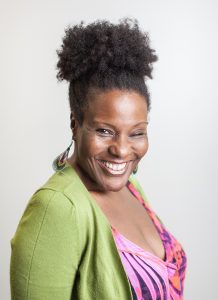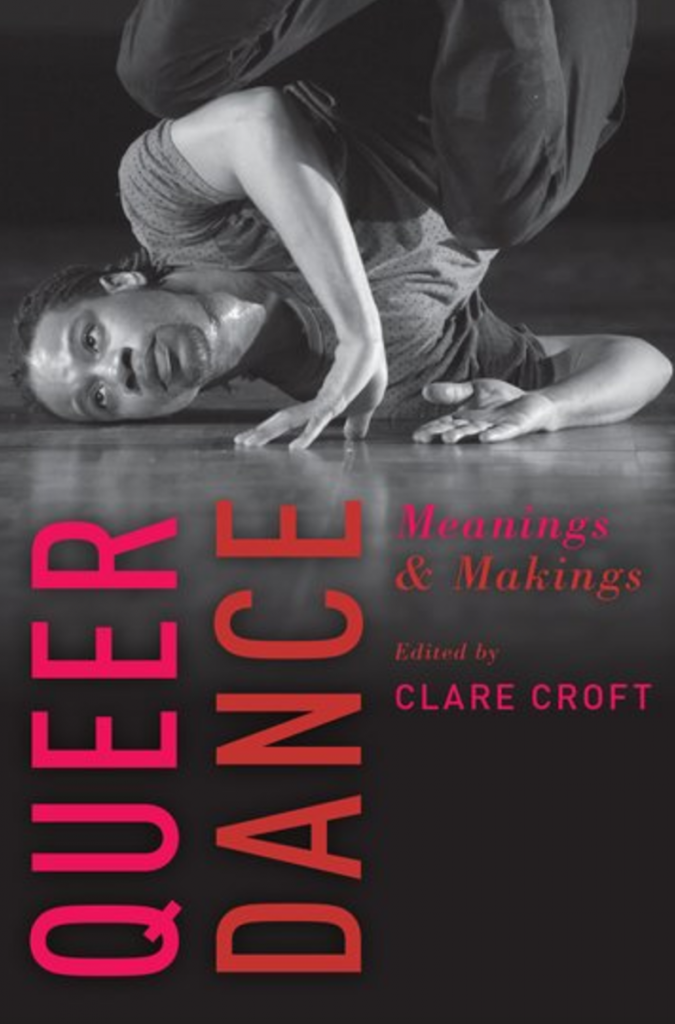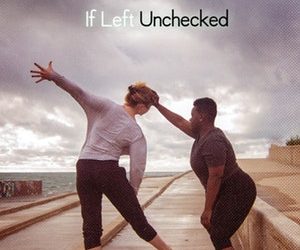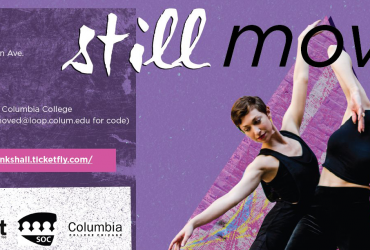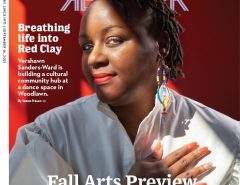Scholarly writings by two Dance Center of Columbia College Chicago faculty members appear in the highly praised new anthology Queer Dance: Meanings and Makings, published by Oxford University Press USA. Edited by Clare Croft, this multi-platformed project-book, accompanying website, and live performance series brings together artists and scholars to ask, “How does dancing queerly progressively challenge us?” Engaging with dance making, dance scholarship, queer studies, and other fields, Queer Dance asks how identities, communities, and artmaking and scholarly practices might consider what queer work the body does and can do. The book includes essays by Dance Center of Columbia College chair Peter Carpenter and Dance Center faculty member Raquel Monroe.
“Queer Dance emphasizes the plurality of queer studies, honoring its indebtedness to black feminist activism . . . and affirming its alliances with anti-racist and anti-colonialist social movements,” writes Melissa Templeton in her January 24, 2018, review of the book for the Los Angeles Review of Books. “While Queer Dance focuses prominently on concert dance, Croft and her contributors have also made a valiant effort to think more broadly of dance as a practice that lives in the theater, in nightclubs, cabarets, studios, and music videos. In the end, the anthology offers a more holistic view of dance and queerness than its predecessors.”
Carpenter’s essay discusses his own choreography for “Last Cowboy Standing,” a solo excerpt from his 2009 ensemble work My Fellow Americans. “Last Cowboy Standing,” which Carpenter performed last summer at the “Explode! Queer Dance” festival in New York City, cultivates movement that combines Carpenter’s extensive research of country-western social dance forms with his training in postmodern release-based techniques. This work contemplates the rhetoric of Ronald Reagan through the frame of queer rage and melancholia, and interrogates the Reagan era from the perspective of the “special interest groups” that his policies consistently admonished. In her LA Review of Books critique, Melissa Templeton writes, “Carpenter pushes back against Reagan’s discriminatory position by reappropriating the cowboy ideal so central to the former president’s political image and demonstrating the cowboy’s reinvention in queer culture. . . . The work is both captivating and eerily disruptive, compelling the audience to consider moments of discontinuity between populist American idealism and queer identity.”
Monroe’s essay discusses the work of the Punany Poets, a spoken word/music/dance collective in Oakland, California, as an example of how, as Melissa Templeton writes, “a growing number of women and LGBTQ artists involved in hip-hop are working within the genre to reflect on the intersection of hip-hop and queer aesthetics.” Templeton notes that “over the last decade, hip-hop has attracted substantial attention in critical dance studies, yet the genre has a fraught relationship to queerness” — a complex issue of significance to the Dance Center of Columbia College’s new Minor in Hip-Hop Studies.
“Of all the qualities I admire in Queer Dance,” writes Melissa Templeton in the LA Review of Books, “I am most struck by its intimacy. In line with the autobiographical style increasingly central to the writing of queer theorists, many of the authors in this anthology incorporate their own experiences into their discussions — a way to validate and communicate solidarity with their queer readers. . . . Queer Dance is quite innovative in its structure. It offers new possibilities for analyzing bodies as a kind of living text and successfully sidesteps the expected format of an academic anthology. . . . In Queer Dance, the personal and the political continually intersect, reminding us of the centrality of pleasure and desire in the formation and circulation of social identities. Whether carving out a space for new queer representation, speaking to nationalist discourses, or finding ways to work through the loss and trauma that too often shapes queer experience in contemporary life, Croft and the authors she has assembled in this book capture how our bodies animate these meaningful moments when we dance — especially when we dance queerly.”


